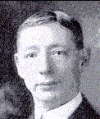We are much interested in morphology, but from the opposite viewpoint. Our work lies mostly in old, chronic inherited, and so-called incurable trouble cast off by the other fellow. We have watched stunted children grow up as nearly perfect as it is possible for a human being to be, we have seen hump backs and large abdomens disappear. For instance, we watched a ten years old girl whose parents could not speak a word of English and whose history and complete list of symptoms were limited to the mere pointing of a finger to a huge goitre as large as two good sized fists, protruding out beyond her chin.
She was stunted, out shape, humped over, looked like an imbecile and acted like one. Such a morphological condition would, at first glance, suggest Baryta carb, and it was given her on that morphological indication, for over a year but without result of any kind. Later she came with an interpreter and gave symptoms which indicated, not Baryta carb, but Kali iodatum. This acted promptly and started the restoration to normal , the goitre disappeared, the intellect developed, the body became symmetrical and today she is rather good looking and intelligent girl.
A child all out of shape, face like a pumpkin, tongue sticking out all the time, noticed nothing and appeared like a deformed idiot. She now walks and talks, nothing escapes her notice and she is growing up symmetrically and rather good looking. As space forbids more, we will just speak of a very interesting case of congenital varicosis of the neck, rather of the jugular vein, which bunches out as large as a hens egg. The entire left face and left ear were purple in colour and looked as if they had been shot full of gunpowder. All of this cleared up with a single remedy, indicated by the symptoms.
It would, indeed, be valuable if we could only know accurately the cause and origin of disease. MORPHOLOGY is an important subject, but not so important and vital as to disqualify from practising the physician who does not give it precedence over the much despised symptoms. Here let us digress, yet to the point. Suppose we have a case of diarrhoea caused by hot weather. For this condition the repertory gives 44 different remedies among which is Croton tiglium.
From the cause alone without the much despised symptoms to qualify, which of these 44 remedies shall we give for a given case? If on the other hand we have a yellow watery stool, coming out like a shot, worse after eating or drinking, Croton tig. will cure that case promptly and effectively, irrespective of a know ledge of either its cause or the morphological architecture of other defects of the patient.
Now which in that case is the more important? Supposing we know just exactly what it was that caused Bryonia to be indicated in one form of pneumonia, and Phosphorus in another, would it change the indication of either one? Are we to wait for a post mortem to find just what structural changes have taken place. Fine of the victim!.
“That no helping hand is given to the growing child that he may reach a normal maturity; that he is permitted to go from one stage to another unaided, or that aid as is given is likely to be futile if not actually injurious” may be true of some homoeopaths but if you are speaking of a Hahnemannian homoeopath it is absolutely false, as we can truthfully testify. We here make bold assertion that no one but a Hahnemannian homoeopath can radically and constitutionally correct the morphologically defective infant, either before or after birth.
The forcible and physiological reduction of morphologically changed body has no effect whatever in removing the predisposition thereto either int he born and unborn child. Temporarily and perhaps rapidly you may produce an observable and spectacular result, but, you have not removed a submerged cause!.
There is an invisible state which brings about these morphological changes, and it is that after they become once set they are difficult to change, but the changes alone can never point the way to the correct remedy, neither can they materially affect the final action of the correctly chosen remedy.

